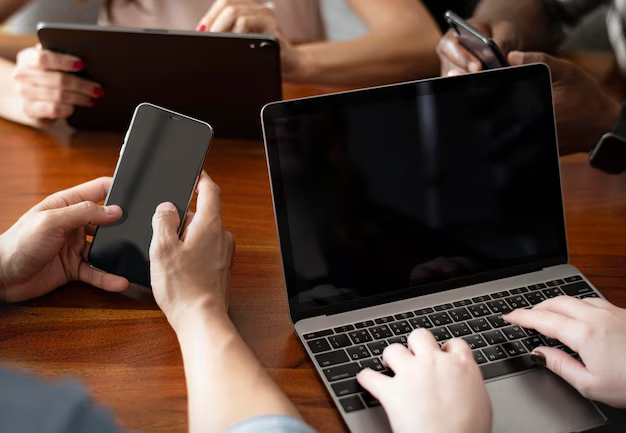A Comprehensive Guide to Seamlessly Transferring Music from iTunes to Your iPhone 🎶
In an age where music is our constant companion, having your favorite tunes at your fingertips is more important than ever. Whether you're jogging, commuting, or just relaxing at home, the ability to transfer music from iTunes to your iPhone is essential for maintaining your soundtrack to life. If you've ever struggled with the dreaded music sync issues, fear not! This guide will take you through the process step by step, offering practical tips and valuable insights to ensure a smooth transition.
Why Transfer Music from iTunes to Your iPhone?
Seamless Access: Having your music collection available offline on your iPhone allows for seamless access without relying on Wi-Fi or cellular data. Perfect for those long flights or remote getaways where connectivity is limited.
Personalized Playlists: iTunes enables you to create and organize personalized playlists, which can then be effortlessly transferred to your iPhone for easy access on the go.
Maximize Device Features: With your favorite tracks on your iPhone, you can fully utilize Apple's features like Siri, Apple Music, and more, enhancing the overall user experience.
Getting Started: Prerequisites for a Successful Transfer
Before diving into the transfer process, ensure you have the following:
Latest iTunes Version: Make sure your iTunes is up-to-date. Connect to the internet and check for any available software updates to avoid compatibility issues.
iPhone with Sufficient Storage: Ensure your iPhone has enough free storage to accommodate your music library. To check, go to Settings > General > [Device] Storage.
USB Cable: A working USB/lightning cable to establish a connection between your iPhone and computer.
Apple ID: Ensure you are logged into iTunes with the same Apple ID used on your iPhone to ensure a smooth sync.
Step-by-Step Guide to Transferring Music
Step 1: Connect Your iPhone to Your Computer
Plug your iPhone into your computer using the USB cable. iTunes should open automatically. If it doesn't, open it manually.
Step 2: Select Your Device
In iTunes, click on the device icon that appears in the upper-left corner. This action allows iTunes to display options specific to your iPhone.
Step 3: Navigate to Music Settings
Under the 'Settings' tab in the sidebar, click on Music. This section will allow you to select your sync preferences.
Step 4: Choose Sync Options
Here, you can choose to sync your entire library or select specific playlists, albums, or genres:
- Entire Music Library: Select this if you want all your iTunes music on your iPhone.
- Selected Playlists, Artists, Albums, and Genres: Allows for more precise control over which content gets transferred.
Step 5: Start the Sync
After selecting your preferred options, click Apply (or Sync) at the bottom of the screen. iTunes will start copying your selected music to your iPhone. Keep your device connected until the sync completes.
Troubleshooting Common Issues
Music Not Appearing on iPhone
- Check Connectivity: Ensure the USB cable is securely connected, and the connection isn’t disrupted.
- Compatibility Issues: Verify that your devices' software is up to date.
- Disk Space: Make sure there’s enough free space on your iPhone.
Sync Button Grayed Out
- Solution: Check your USB connection and confirm that your iPhone is unlocked and trusted by the computer.
Alternatives to iTunes for Transferring Music
Apple Music and iCloud Music Library
For users who prefer cloud-based solutions, Apple Music and iCloud Music Library offer seamless integration across devices:
- Apple Music: A subscription allows you to stream and download songs directly to your iPhone without needing a computer sync.
- iCloud Music Library: Syncs your entire iTunes library with all your Apple devices using the cloud.
Third-Party Apps
For a more customized approach:
- MediaMonkey, AnyTrans, or Syncios: These apps provide alternative methods for transferring music without involving iTunes, each offering unique features for music organization and file transfer.
Visual Summary: Key Steps to Transfer 👇
🔹 Connect your iPhone to your computer.
🔹 Select your device icon in iTunes.
🔹 Navigate to Music settings.
🔹 Choose sync options (entire library/selected items).
🔹 Click Apply to begin sync.
Enhancing Your Music Experience
Organizing Music on iTunes
- Create Playlists: Group your favorite tracks by mood, genre, or activity to make finding the perfect song a breeze.
- Use Ratings: Rate songs to quickly identify your favorites.
- Album Artwork: Enhance your browsing experience with appealing visuals.
Maintaining a Digital Audio Library
- Regular Backups: Safeguard your music by regularly backing up your iTunes library.
- Metadata Management: Ensure song information is complete for better searchability.
Optimizing iPhone Settings for Music
- Playback Settings: Explore options such as crossfade, equalizer presets, and volume limit to enhance audio quality.
- Battery Management: Use settings like Low Power Mode during long music sessions to minimize battery drain.
Final Insights to Keep Your Music Flowing
Transferring your music from iTunes to your iPhone shouldn't be a daunting task. By following these steps, you can enjoy instant access to your music, tailor your playlists to suit any occasion, and experience your iPhone’s full potential. Embrace these insights and enjoy a seamless and personalized musical journey. 🎧
Remember, whether you prefer the classic method of iTunes or modern alternatives like streaming, there are multiple paths to keep your favorite tunes on tap, wherever life takes you.

Related Topics
- How Can I Transfer a Video From Iphone To Computer
- How Can I Transfer Apps From Iphone To Ipad
- How Can I Transfer Apps From One Iphone To Another
- How Can I Transfer Contacts From Iphone To Iphone
- How Can I Transfer Contacts From One Iphone To Another
- How Can I Transfer Data From Iphone To Android
- How Can I Transfer Data From Iphone To Iphone
- How Can I Transfer Data From Iphone To Samsung
- How Can I Transfer Files From Android To Pc
- How Can I Transfer From Iphone To Samsung